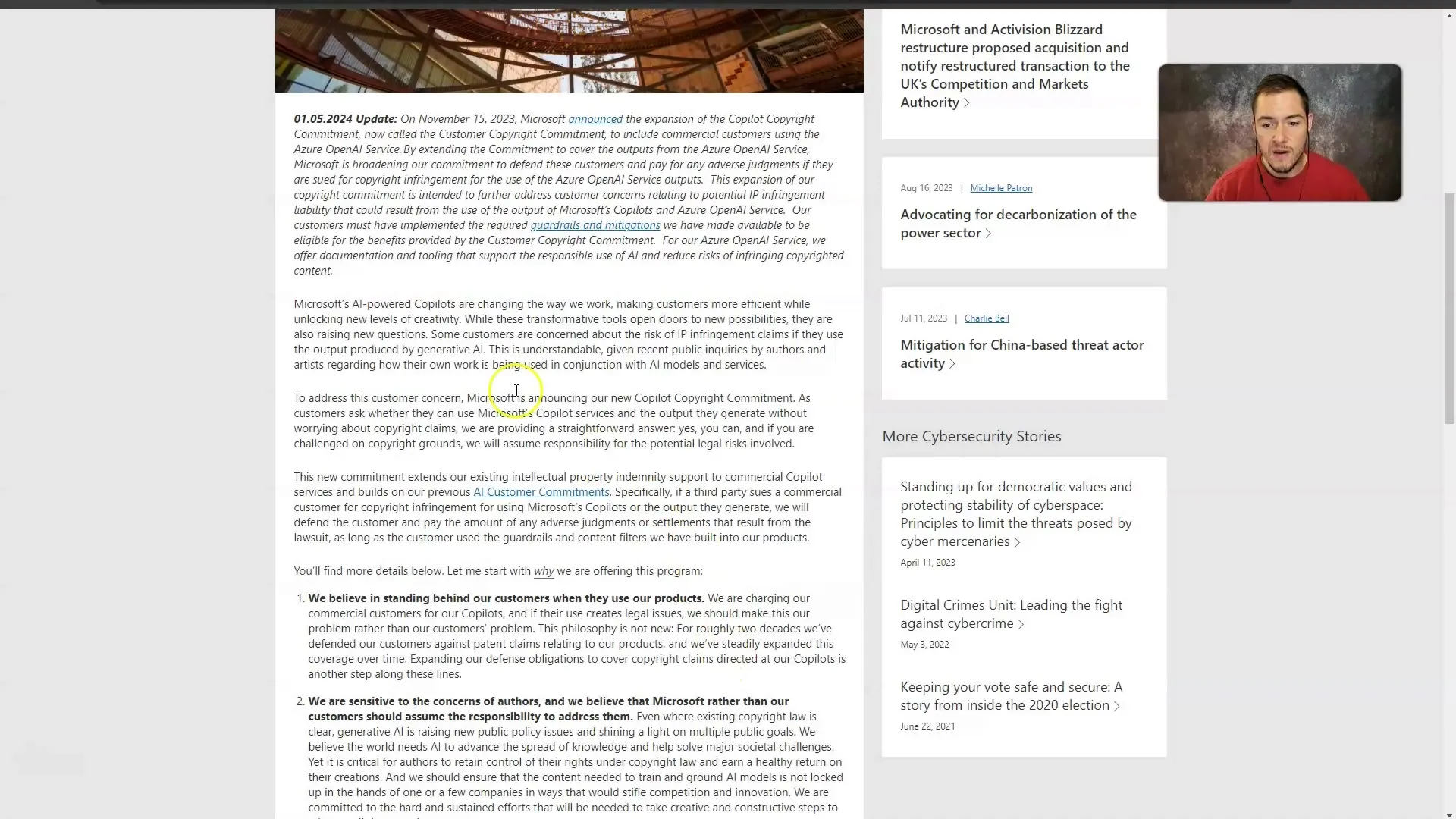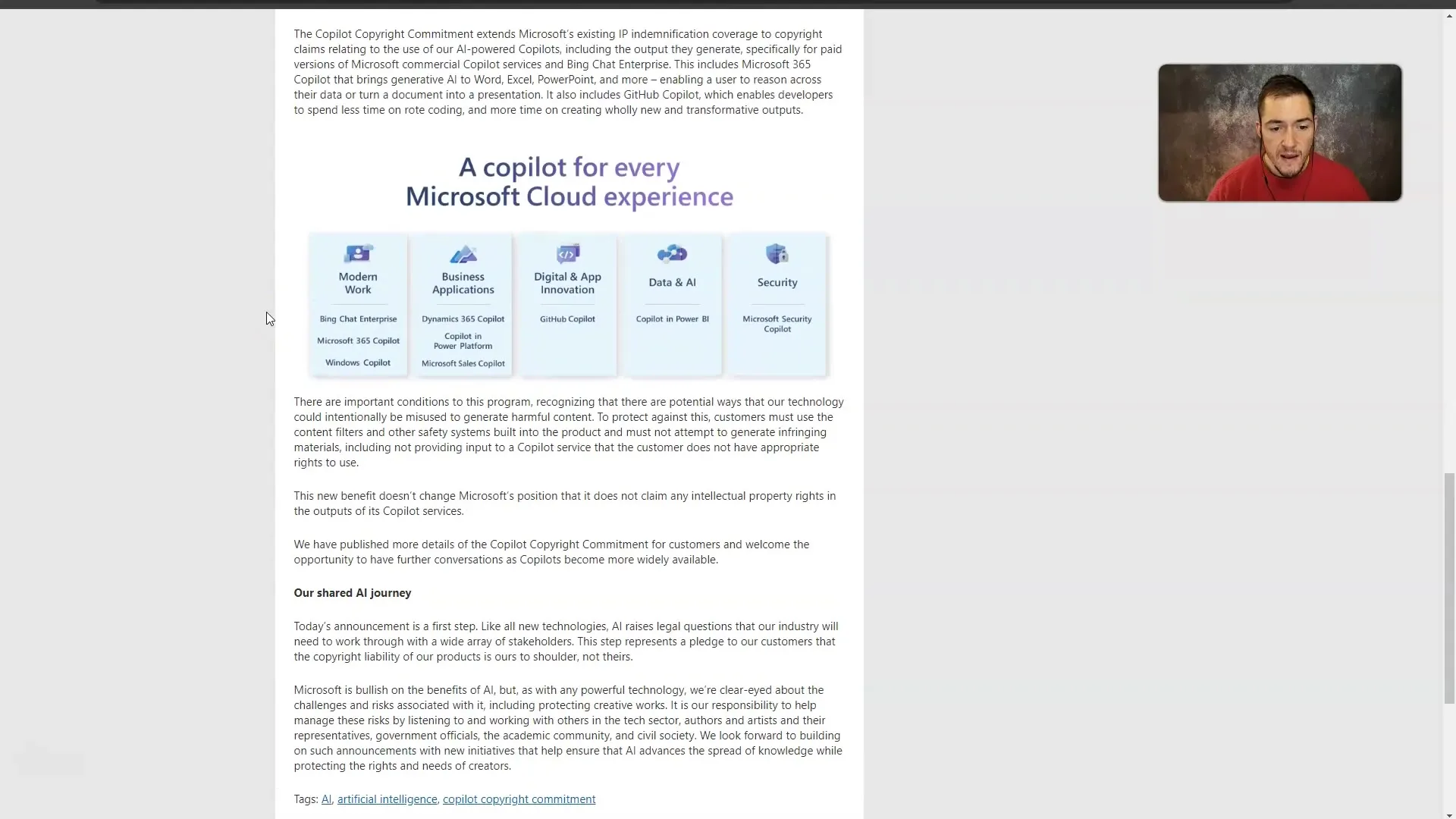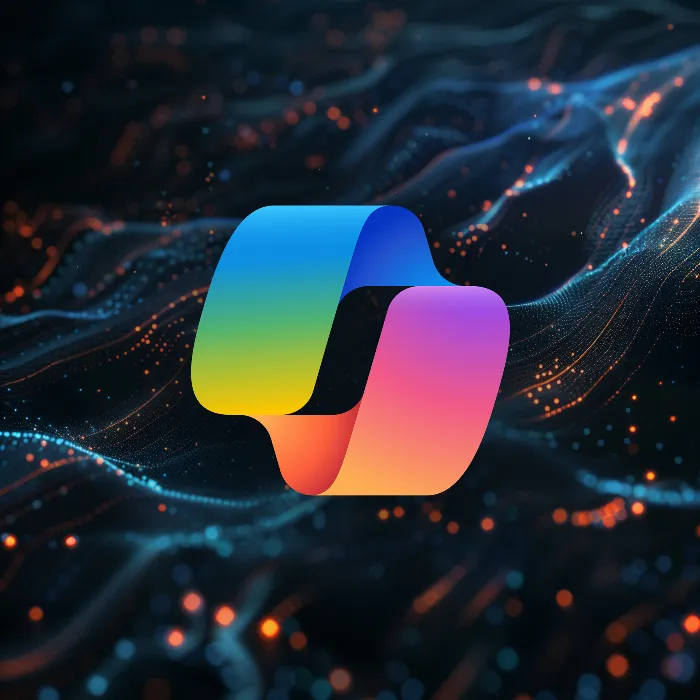Welcome to this tutorial, where I explain the legal aspects of copyright in connection with the use of Microsoft Copilot and AI-generated content. As a software specialist and lecturer, it is important for me to help you understand the fundamentals of the rights and responsibilities when dealing with AI content. With the increasing proliferation of AI-powered tools like Microsoft Copilot, it is essential to make informed decisions about how you can effectively and legally use these technologies.
Main Insights
Our discussion focuses on the following points:
- You can use and distribute contents generated with Microsoft Copilot in your business as long as you adhere to ethical principles.
- Microsoft offers support and legal protection when it comes to the use of content generated by Copilot.
- It is important to carefully review the content to avoid misinformation, especially on topics you are unfamiliar with.
Step-by-Step Guide
Before you start using content generated by Microsoft Copilot, it is important to understand the copyright situation. You have the right to generate texts and use them in your business, but health concerns may arise when it comes to the factual accuracy of the information.
When you use Microsoft Copilot, you generate content based on the inputs you make. You can distribute or even sell this content, provided you comply with the regulations provided by Microsoft. Make sure you have the necessary rights for your subscription, as use without a license can lead to copyright infringement.
The protection offered by Microsoft is a significant advantage for you as a user. If your Copilot-generated content runs into legal trouble, Microsoft will try to support you. This is especially true if you use the content responsibly and in accordance with their guidelines.
It is especially important to review the contents generated by AI. Ensure that the information is correct and relevant. For example, if you want to write an article on a scientific topic that you are not familiar with, the output from AI can be misleading. Verify everything you wish to publish.
An ethical approach to AI usage is essential. Use AI tools to generate content that you can assess. Only write or speak about topics you have some understanding of to avoid misunderstandings and false information. This protects both you and your audience.

To learn more about copyright and the use of AI content, I recommend reading Microsoft's official documentation. Here you will find important information and FAQs on topics relevant to your usage. By being well-informed, you can work more confidently with these tools.

Finally, before publishing the generated contents, seek feedback from others. This can help you identify potential misinterpretations and ensure that your information is factual and correct. Consider your network or colleagues as valuable resources.
Summary
In this guide, you have learned the basics of using Microsoft Copilot and the legal framework for AI-generated content. The responsibility always lies with you, and Microsoft offers you support if you abide by the rules. Checking the generated content and ethical use are key.
Frequently Asked Questions
What can I do with content generated by Microsoft Copilot?You can use, distribute, and even sell this content in your business as long as you adhere to ethical guidelines.
Does Microsoft offer legal protection for generated content?Yes, Microsoft provides support if you encounter legal issues with the content you have generated.
How important is reviewing AI content?Reviewing is crucial to ensure the information is accurate and you are not spreading misinformation.
Do I need special licenses for usage?For the use of Microsoft Copilot, an appropriate subscription is required to avoid legal problems.
Should I only work with topics I have knowledge of?Yes, it is advisable to only write about topics you have a certain understanding of to avoid misrepresentations.


